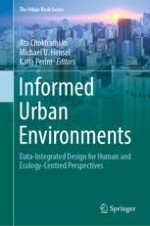This book collects ground-breaking works on the actual and potential impact of big data and data-integrated design for resilient urban environments, including human- and ecology-centred perspectives. Comprehending and designing for urban social, demographic and environmental change is a complex task. Big data, data structuring, data analysis (i.e. AI and ML) and data-integrated design can play a significant role in advancing approaches to this task. The themes presented in this book include urban adaptation, urban morphology, urban mobility, urban ecosystems, urban climate, urban ecology and agriculture. Given the compound nature of complex sustainability problems, most chapters address the correlation between several of these themes. The book addresses practitioners, researchers and graduate students concerned with the rapidly increasing role of data in developing urban environments.
